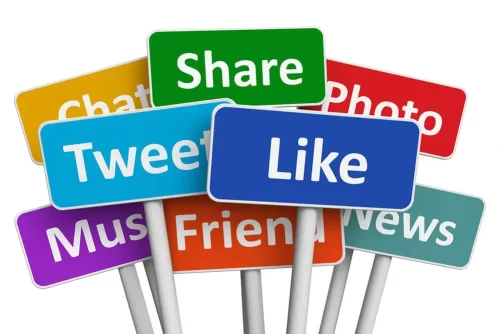Media experts these days put a lot of stock in the idea that our digital culture is based on sharing established content. In the past decade, social media has gone from an interesting side project to a ubiquitous marketing machine of unparalleled power, the medium through which users spread digital content along with their opinions. A single click can showcase attention-grabbing content to hundreds, if not thousands, on your friends list.
AI + Human Edited Content Creation.
Only $0.01 per word!

While an individual’s motives for sharing are a varied as individuals themselves—they might want to show off by preaching altruism from the comfort of their living room, or to help raise awareness of a charitable cause—companies tend to share content, or want their content shared, for a combination of three reasons:
- To increase website or blog traffic, drawing attention to their business.
- To create discourse surrounding their business by gathering new fans, new customers, more clicks, and therefore a greater profit.
- To generate brand loyalty with their customers by setting up a positive association with their brand in their minds.
Marketing and advertising agencies are launching increasingly complex and labyrinthine viral campaigns in an attempt to reach these targets, but such an approach is not a guarantee of success.
It’s easy for an individual to share content. For companies, however, creating high-quality, high-performance viral content isn’t quite so simple. Sometimes content is successful beyond the wildest dreams of marketers and advertisers, giving a company the boost it needs to dominate the market. Other times, campaigns are received with deafening silence; or, worse, they destroy the company’s public reputation or image.
There is no risk-free way to produce viral content generating clicks in the thousands. You can, however, take the following factors into consideration, which significantly increase the chance of your content’s success:
1. Appeal to the Right Audience
A successful campaign—one with the triumvirate of likes, shares, and traffic—is one that addresses the right target audience. You must delineate different client needs and critically examine the motives, emotions, and online personalities of your users.
In 2011, The New York Times actually performed a study on the psychology of sharing, taking a closer look at the importance and value of sharing in the lives of their 2,500 participants. They found that there are six types of sharers:
- Careerists, who want people to think that they’re intelligent and use their posts and shares to forge networks in the corporate world. They love sharing high-quality content.
- Altruists, who want to make a difference in people’s lives and be seen by their friends as trustworthy, virtuous, and reliable.
- Hipsters, who value their individuality and expression above all else. They tend to be young, creative innovators, aiming to express their personalities through their posting habits.
- Boomerangs, who want to be the spark that ignites discussion or provokes a fiery controversy. They want recognition for their dedication, using their social media to participate in current affairs and topical conversations.
- Connectors, who see social networks as a means to maintain contact with their friends and colleagues. They like organizing their social networks with the help of media and want to appear creative and relaxed.
- Selectives, who, unlike the other five sharers, are extremely cautious with the content they share. They share only content that will make them seem resourceful and informative to others, and hit the share button scarcely.
While each of these borderline-Jungian archetypes might not apply to your audience, you can categorize your users in a roughly similar fashion, allowing you to tailor and modify your content to appeal to the needs of each individual.
2. Finding the Right Avenue for Your Content
Just as there is no single road to success, nor is there any one path to viral marketing. No one channel of distribution is perfect, so you should always spread your message across various channels to ensure maximum exposure. However, identifying which channel is most likely to connect with your audience will drastically improve the chance of your campaign’s success.
When it comes to communication channels, each different sharer prefers a different mode of communication.
- Careerists value LinkedIn, Xing, and other professional networks.
- Altruists like emails, as they are private and seen as trustworthy.
- Hipsters, with their forward-thinking outlook, love using new technologies; their penchant for fresh fashion choices extends to their choice of communication channels.
- Boomerangs need rapid reaction and wide reach. They love communicating on Twitter, Facebook, and Google+.
- Connectors prefer Facebook and email’s organizational capacity.
- Selectives, since they are so painstaking about their content choices, prefer email for communication, as it allows their unique, intelligent voice to be heard.
Your distribution strategy and the content you’re sharing should take the channel favored by your target audience into consideration. Content well suited to a particular channel that sticks to its established rules is shared at a far higher rate than content that does not.
3. Strike While the Iron Is Hot
Once you’ve determined your target audience and communication channel, you need to work on your timing. Viral content either thrives or withers depending on the timing of its release. Know when your audience is online and looking to share content, so you can post it at exactly the right moment. Take the following tidbits into account:
- Facebook users are most active on business days from 1:00 to 4:00 pm.
- Twitter users are most active on business days between 1:00 and 3:00 pm.
- LinkedIn’s peaks are Tuesdays, Thursdays, and Fridays between 7:00 and 8:30 am and 5:00 to 6:00 pm—times when careerists have little to do at their day jobs.
- Tumblr users are typically online from 7:00 to 10:00 pm Mondays through Thursdays, and from 4:00 to 10:00 pm on Fridays.
- Instagram is busiest on Mondays at 8:00 pm and from 5:00 to 6:00 pm from Tuesday through Friday.
- Pinterest tends to be most active from 2:00 to 4:00 pm and 8:00 to 11:00 pm on business days, but has a steady usage over weekends.
- Google+ sees the most activity on business days from 9:00 to 11:00 am.
The launch time of your campaign makes an immeasurable difference in the likelihood of its success, so it’s imperative that you plan carefully. After an exhaustive analysis of your users, you should be able to post your content at the moment when your target audience is online—whether it’s on one channel or multiple.
Viral campaigns can last days, weeks, or months. Seasonal or isolated incidents are hugely important: the holiday season, fine weather pushing people outdoors, and major sporting events like the Super Bowl or a World Cup final can sometimes make your audience harder to reach with everyday content. But if you can create viral content related to current events—such as football-centric content in the football finals season—it’ll be shared and known within that particular context. Current events can offer a lucrative opportunity to launch a viral campaign if your content strategist keeps their eye on the ball.
4. Having the Content Right for Your Audience
It’s amazing how many content creators forget this vital step. Only when you know your audience, the right channel, and the best launch time do you create and share content, whether it’s images, videos, long text, or any other possible format. Users share content across all formats and forms when it addresses the following needs:
User Value
You should be informing, entertaining, or helping your users—or any combination of the three. Widely shared content is valuable to the user, and the current trend in the market is for high-quality, useful, and unique content that will convert casual readers into dedicated fans.
The Emotional Touch
The ancient Greeks figured this out long before the rise of the Internet. If your content triggers emotion—what they called pathos—then your users will remember it particularly well. Use positive emotions, rather than negative ones, for the user to forever associate with your content. Surprise and entertain your users—make them laugh—so that they want to spread it among their social groups.
Social Sharing
The New York Times study referenced earlier concluded that sharers share to stay in contact with their social group, whether it’s a friendly bit of banter or offering something to help them out. Provide content that actively encourages social interaction or builds their sense of community.
Get them Talking about Themselves
Everyone likes talking about themselves, and this is equally true on the Internet. Boomerang and hipster users will jump at the chance to express themselves with your content, massively increasing your odds of viral success. You might generate exclusive or controversial content that these users will see as helping them stand out from the sea of conformity. You can take this one step further by involving the user—for example, hosting a creative contest that encourages users to participate and show off their creative side.
Design and Layout
When it comes to viral success, regardless of whether it’s video, image, or text, the aesthetic appeal of your content counts far more than you might think. Longer text—those that exceed 3,000 words—spread much better than their shorter cousins did. Furthermore, image-adorned content always fares far better than raw blocks of text; users love sharing articles with pictures on Facebook and Twitter.
You can even engineer your Facebook posts to maximize sharing prospects. One study, conducted in Austria, found that:
- Posts with pictures go viral 70% more often than those without.
- Videos or links have a negative effect on virality.
- Language in your posts needs to be simple.
- Posts need to be fewer than three lines long.
- If you post rarely, you are shared often.
The same conclusion was found by The New York Times. The message here is clear: simple, easy-to-understand messages do better than complicated ones. Pre-worded tweets and image-embedding URLs allow your users to share or embed your content with the greatest of ease.
Branding
While you don’t want your brand drawing too much attention to itself, you need compatibility of brand and content to guarantee the authenticity of your message. How the content relates to your brand actually influences your viral success, and your content must be branded so as to link your users to your business. The content provider’s reputation, credibility, and public image all have an impact on the success of your branded content. After all, people love sharing brands that they feel a strong personal connection to.
Conclusion
One of the benefits of great content is that it can build its own momentum, taking your message to every corner of the Internet. Content scarcely spreads of its own volition, though, so those seeking to create viral content must plan their campaigns well. Research, testing, and analysis are all highly important, and they should inform you as to the creation of appropriate, easily shareable, user-friendly content that creates an emotional connection with your audience.
100% human-written content by native English writers
OUR BLOG



